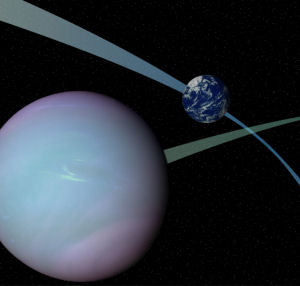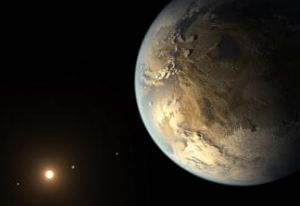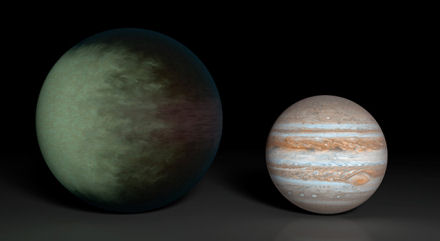Harvard-Smithsonian scientists speculate that little green men may not be “green” at all, and finding them might be a simple matter of looking for industrial pollution in the atmospheres of exoplanets. The remote analysis of distant planets for signs of pollution is discussed in the latest issue of The Astrophysical Journal and the scientists who developed the theory say we could spot the fingerprints of certain pollutants under ideal conditions. This, they suggest, would offer a new approach in the search for extraterrestrial intelligence (SETI).

Loeb’s team says that the upcoming James Webb Space Telescope (JWST) should be able to detect two kinds of chlorofluorocarbons (CFCs) – ozone-destroying chemicals used in solvents and aerosols. They calculated that JWST could tease out the signal of CFCs if atmospheric levels were 10 times those on Earth. It’s possible, they argue, that a particularly advanced civilization might intentionally pollute the atmosphere to high levels and globally warm a planet that is otherwise too cold for life.
But there is a caveat to this work. JWST can only detect pollutants on an Earth-like planet circling a white dwarf star, which is what remains when a star like our Sun dies. That scenario would maximize the atmospheric signal. Finding pollution on an Earth-like planet orbiting a Sun-like star would require an instrument beyond JWST – a next-next-generation telescope.
However, the team notes that a white dwarf might be a better place to look for life than previously thought, since recent observations found planets in similar environments. Those planets could have survived the bloating of a dying star during its red giant phase, or have formed from the material shed during the star’s death throes.
While searching for CFCs could ferret out an existing alien civilization, it also could detect the remnants of a civilization that annihilated itself. Some pollutants last for 50,000 years in Earth’s atmosphere while others last only 10 years. Detecting molecules from the long-lived category but none in the short-lived category would show that the sources are gone. “In that case, we could speculate that the aliens wised up and cleaned up their act. Or in a darker scenario, it would serve as a warning sign of the dangers of not being good stewards of our own planet,” says Loeb.
Related:
Discuss this article in our forum
SETI needs to see the light, say astrophysicists
Line-Of-Sight SETI Revamp Proposed
Hubble spots water on distant exoplanets
Kepler mission identifies most Earth-like exoplanet yet discovered


















Comments are closed.